

For Hulda Guzmán, Samaná – a coastal town in the Dominican Republic – is more than just “home.” Over the course of her career, its tropical landscapes have been a persistent muse, inspiring vividly hued paintings that capture its natural beauty. But when it comes to Guzmán’s work, there’s always more than meets the eye. Though she paints primarily from direct observation, there are always fantastical narratives and spatial tricks for the viewer to contemplate. She speaks to Alia Wilhelm about finding the surreal and the spiritual within her surroundings.
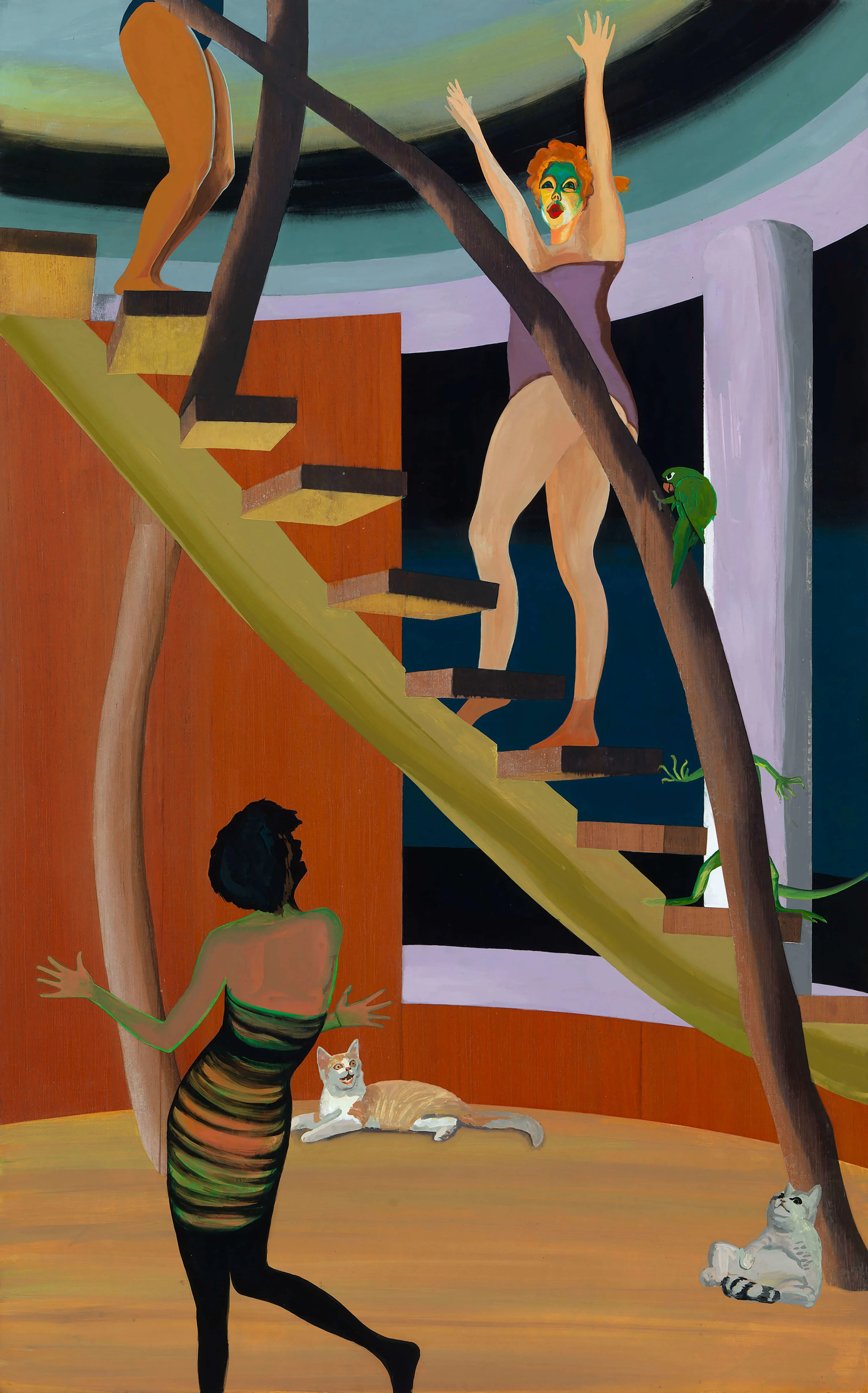
A few hours ago, Hulda Guzmán was sat in front of “Surprised!”, the first of Henri Rousseau’s renowned jungle paintings, at the National Gallery in London. In it, a flash of lightning illuminates a tiger crouched amid the foliage, seemingly poised to pounce on its prey. “It was incredible,” she recalls, miming an explosion with her hands. “I was just staring at it for half an hour.”
Guzmán’s reaction to Rousseau’s tableau is perhaps unsurprising: like Rousseau, most of her work depicts tropical scenes that are simultaneously familiar and fantastical in kaleidoscopic color. But while Rousseau’s monkey-laden peppercorn trees and oversized water lilies were inspired by illustrated textbooks and visits to the Jardin des plantes in Paris, Guzmán’s work is born out of a deep and reverent study of Samaná, the coastal town in the Dominican Republic where she grew up and still resides.
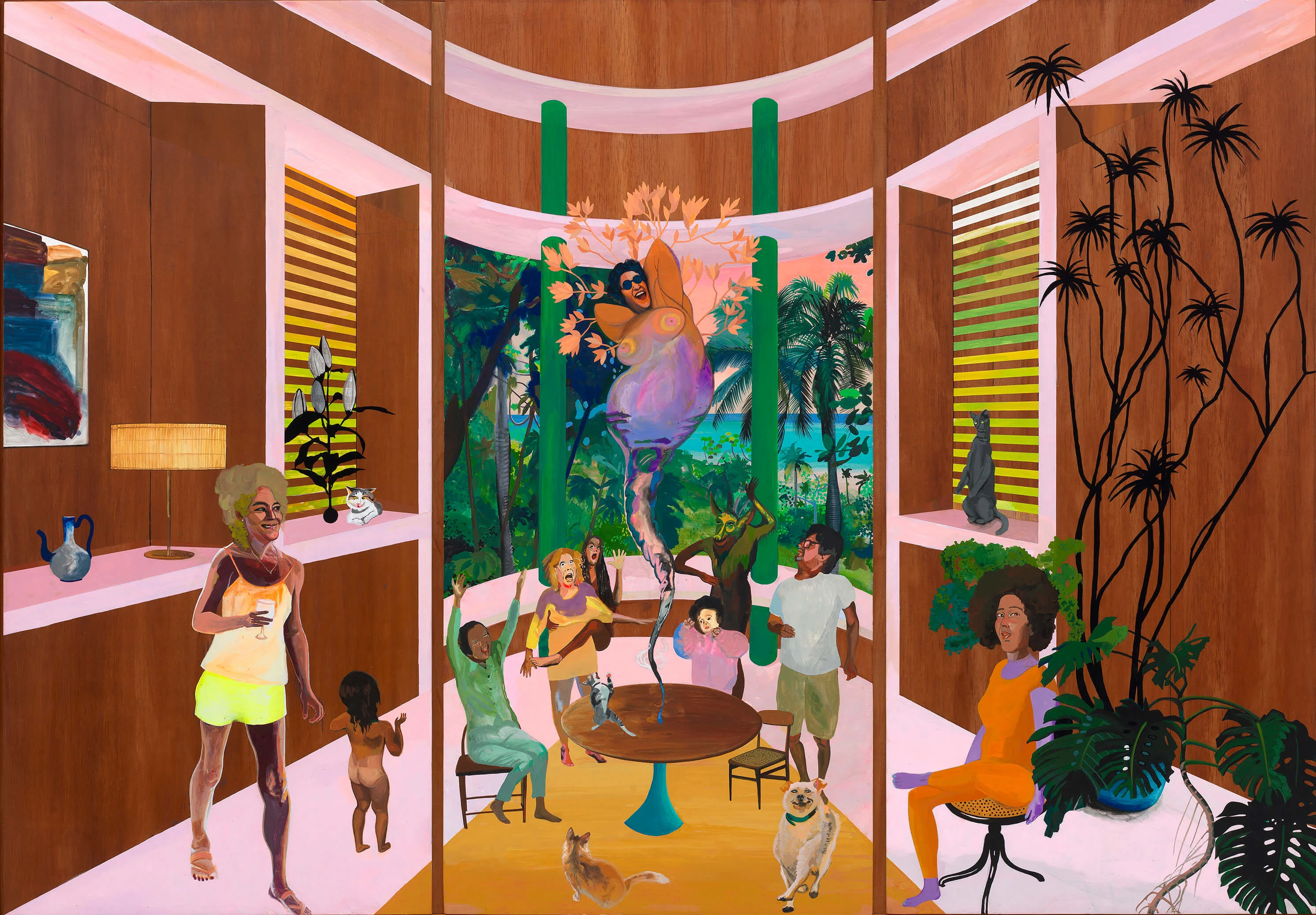
In her paintings, usually based on direct observation, palms tower long and languid overhead, as seen from her windows; lightning strikes in the distance, the way it did last summer when a tropical storm lit up the sky. “When you paint something from real life, it inherently requires your complete attention and presence, and I think there’s a bigger love in that,” she says. “You’re not judging, you’re not analyzing, you’re not labeling. It’s just pure contemplation.”
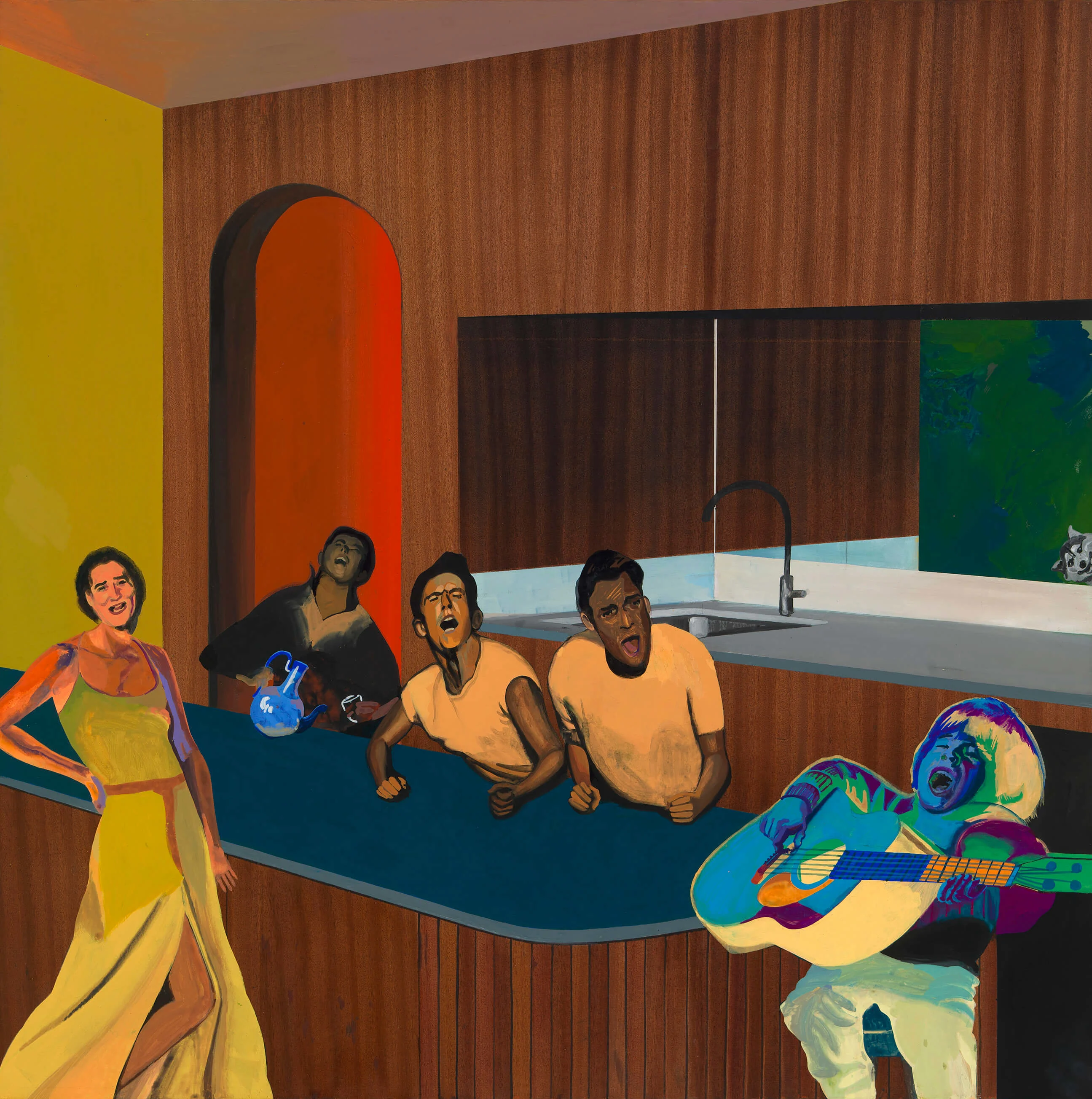

Layered onto the earthly aspects of the work are surrealistic flights of fancy. Paintings within paintings trick the eye and distort perception, and animals take on human traits while spirits are depicted as spirals of colored flecks. We become privy to physical manifestations of unseen forces, including togetherness and desire.
Tapping into those forces is crucial to Guzmán, who questions their role not just in her art but also in her everyday life. “It’s a personal, spiritual quest that is transposed onto the work,” she explains. “So I think it goes both ways: the practice makes me wonder, and the wonder makes me practice.”
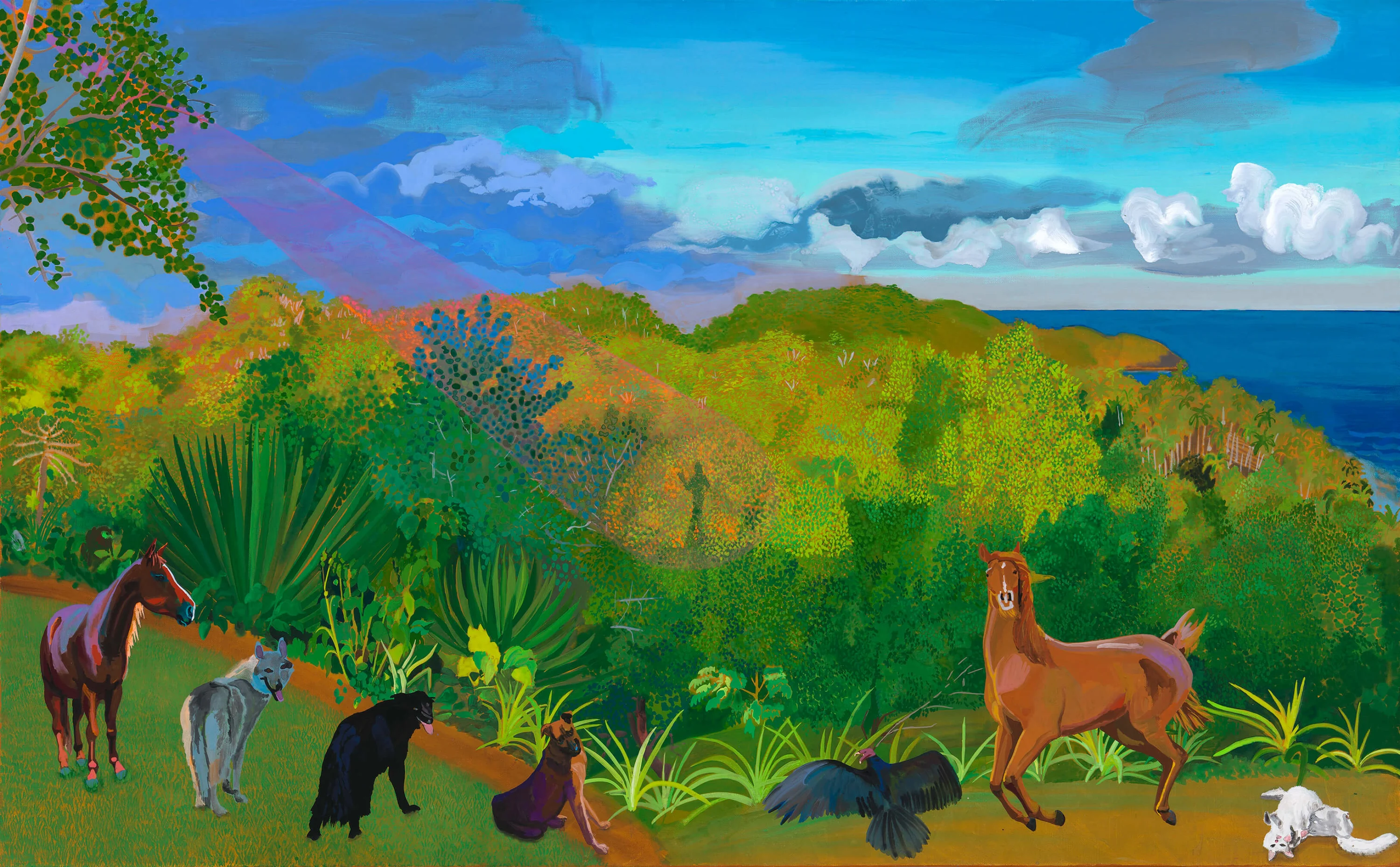
“Everybody Loves The Sunshine” (2022)
Guzmán believes there’s a special energetic spot on the periphery of her family’s home, which sits on a mountain by the sea. “Always, during the full moon, there’s a gathering of animals here – horses, goats, chickens, dogs, cats,” she says.
She recalls photographing the landscape after sunrise one morning, the light shining at a hard angle against the horizon so that she could see her shadow projected onto the trees – a memorable moment she replicated in “Everybody Loves The Sunshine.”
For Guzmán, the shadow, as a psychological concept, holds particular weight. “I’m interested in the spiritual quest, in that battle that we all have with our inner demons,” she says. “We’ve been brought up in this culture where it’s supposed to be about the bright side, neglecting all that is dark, and calling it ugly. Who said that it’s ugly? Why shouldn’t [the darkness] be appreciated, understood, studied and nurtured?”

“Delightning” (2022)
Guzmán’s current exhibition at Stephen Friedman Gallery is the first show of works created in her new studio – a bungalow built and designed for her by her architect father. “It’s in the middle of nowhere,” she says. “It’s all nature. I can hear the ocean. I can hear the birds. I can hear the whooshing.”
In “Delightning,” she immortalizes its woven roof and airy design, as well as the greenery that lies outside its gigantic windows, which help to quiet her mind. “I’ve never been able to paint if I’m not feeling completely at peace,” says Guzmán. “It’s very important because all those high vibrations are transposed onto the painting. I don’t want to ever paint anything negative and spread those feelings, ever.”
The painting has a darker quality to it than her daytime scenes: a frightened figure stands with her arms by her head, looking out at the lightning, while the child next to her gazes serenely towards that same horizon. “It’s meant to speak about how we tend to react to things – our automatic reactions versus how we could react,” says Guzmán. “Look at this little girl, just contemplating the beauty of [lightning]. It doesn’t have to be a scary thing. So [the painting] questions the nature of fear.”

“Green Season” (2022)
“Green Season” began as a contemplation of the beautiful landscape outside of Guzmán’s new studio. “But then I felt the need, for some reason, to add some drama to it,” she says. That drama came in the form of a pair of hands clutching the edge of the balcony, and a second pair seemingly protruding from it.
“I like to leave [the meaning] up to interpretation. Either the person is falling down or climbing up,” she says. “Those other hands are magic – an element of wonder. For me, [the painting is] a way to express the unfathomable part of life, all of those energies that come into action but aren’t perceivable to our human senses, but are there nonetheless. That’s what I like to capture about nature: its power to anchor us in the present.”
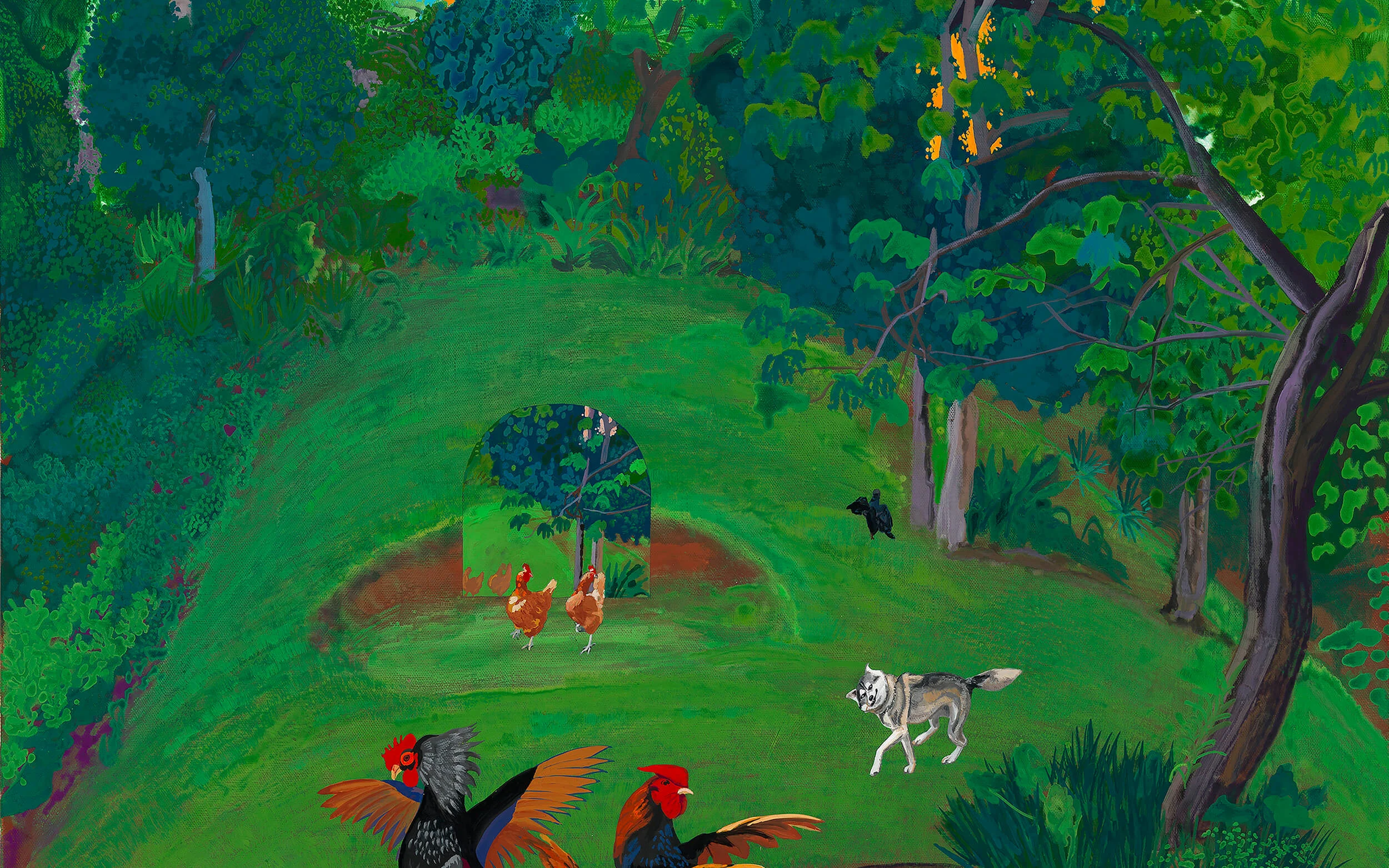
“Dancing Cocks” (2022)
“This narrative, to me, illustrates in a very literal way the dance of nature. That landscape was a lot about the way that nature makes me feel and connects me with myself; and how, when you’re in that state of presence, you see the interconnectedness of all living creatures,” Guzmán explains.
“I tend to be over-observant of details, drowning in the complexity of it all – like [painting] the infinite amount of leaves – whereas for ‘Dancing Cocks,’ I’m trying to step away from that meticulous leaf-by-leaf depiction. I’m trying to have some simplification, some kind of abstraction.”
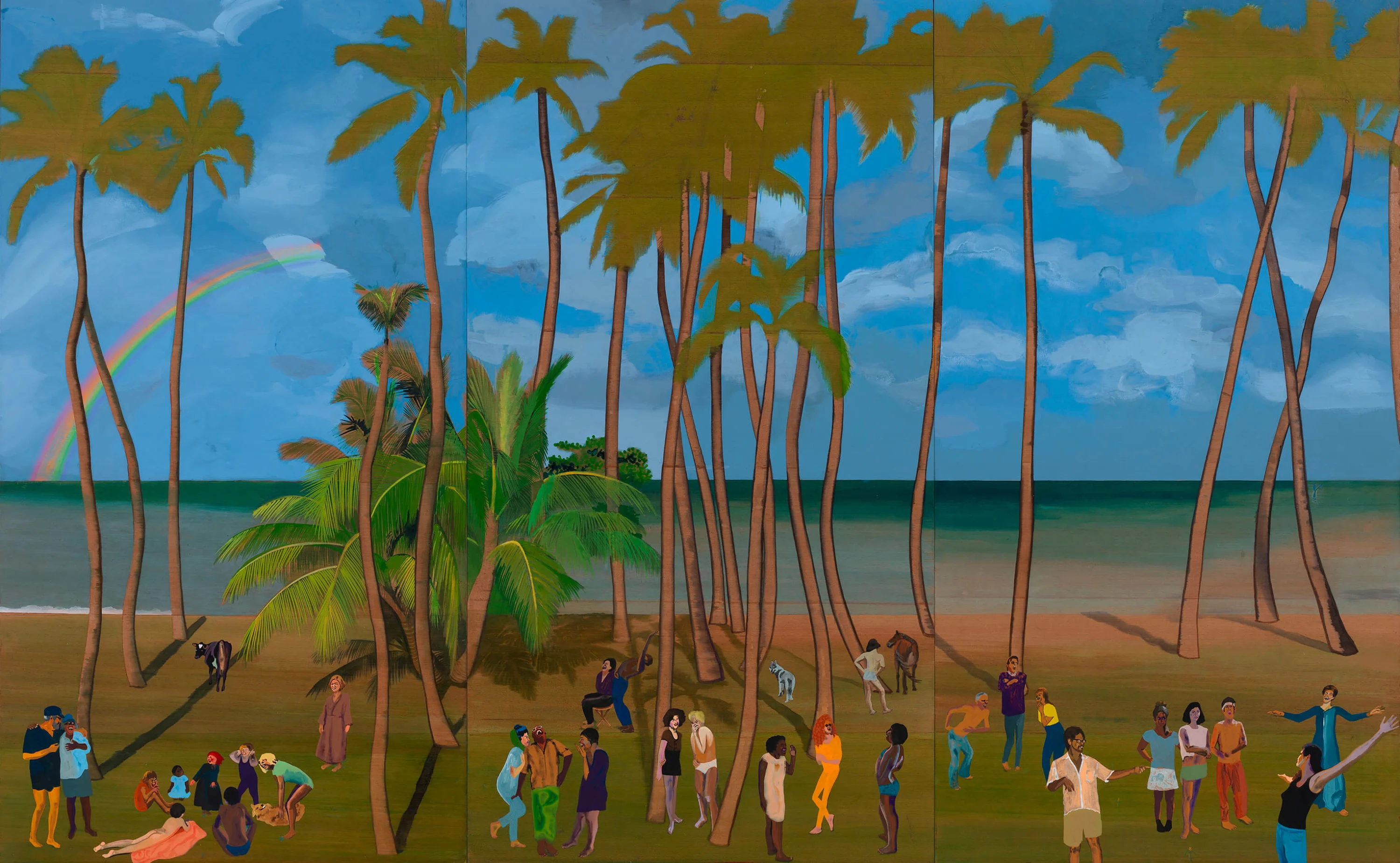
“Morning Skits” (2022)
“This year, I’ve been listening to stand-up comedy and comedy podcasts. I’ve been trying to develop my idea of comedy. I want to be a funnier person, obviously – don’t we all?” Guzmán says. “To me, [‘Morning Skits’ is] a scene where everyone wakes up together in the morning – it’s very communal – and there’s this game where everybody has to go outside and tell jokes. It sounds like something that should be done in a societal way. ‘Gather round people, it’s joke time.’”

